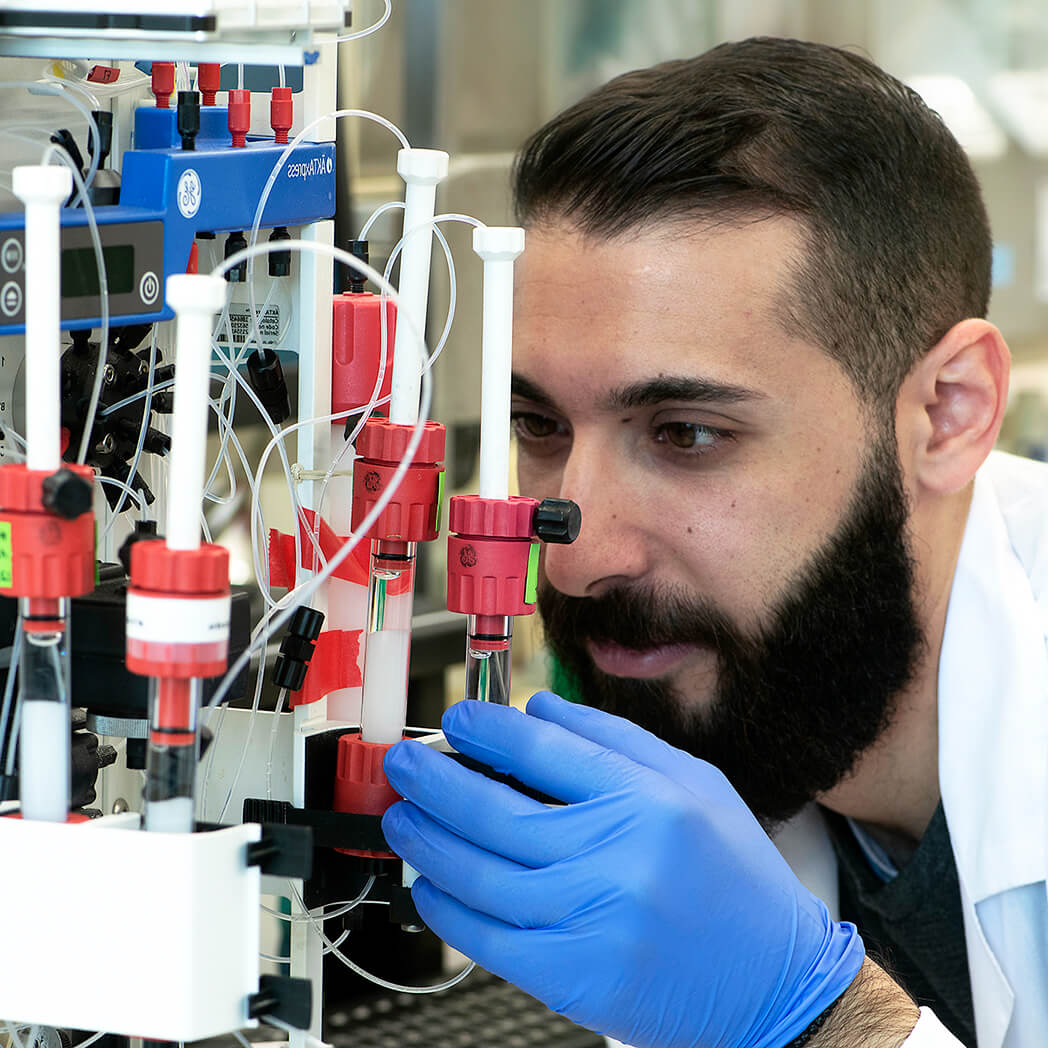Overview
Cat #:
Size:
25 mg
Lot:
I100SM0125
Alternative Name DynaCirc®, Prescal®
Lyophilized Powder yes
Source Synthetic
MW: 371.4
Purity: >99%.
Effective concentration 50 nM - 5 μM.
Chemical name 4-(2,1,3-Benzoxadiazol-4-yl)-1,4-dihydro-2,6-dimethyl-3,5-pyridinecarboxylic acid methyl 1-methylethyl ester.
Molecular formula C19H21N3O5.
CAS No.: 75695-93-1
Activity Isradipine is a dihydropyridine that acts as an L-type, voltage-gated Ca2+ channel blocker and is used in the clinic to treat hypertension1,2. Isradipine inhibits L-type channels expressed in Xenopus oocytes with IC50 = 0.2 μM at a holding potential of -80 mV and the inhibition is state dependent and increases with reduced membrane hyperpolarization2. Isradipine, was also shown recently to putatively be an effective treatment for Parkinson’s disease, by affecting particularly the excitability of certain CaV1.3 expressing dopaminergic neurons3.
References-Activity
- Ganz, M. et al. (2005) J. Clin. Hypertens. 7, 27.
- Berjukow, S. et al. (2007) J. Biol. Chem. 275, 22114.
- Chan, C.S. et al. (2007) Nature 447, 1081.
Shipping and storage Shipped at room temperature. Product as supplied can be stored intact at room temperature for several weeks. For longer periods, it should be stored at -20°C.
Solubility DMSO. Centrifuge all product preparations before use (10000 x g 5 min).
Storage of solutions Up to four weeks at 4°C or three months at -20°C.
Our bioassay
 Alomone Labs Isradipine blocks L-type Ca2+ currents in Xenopus oocytes.A. Time course of L-type channel (CaV1.2+α2δ1+β1a) activity before and during applications of 200 nM and 1 μM Isradipine (#I-100) (indicated by bars) and upon wash. Holding potential was -80 mV and currents were elicited every 10 seconds by 100 ms ramp to +40 mV. B. Superimposed example current traces (plotted against the corresponding ramp voltage) before and during application of 200 nM and 1 μM Isradipine as indicated (taken from the experiment described in A).
Alomone Labs Isradipine blocks L-type Ca2+ currents in Xenopus oocytes.A. Time course of L-type channel (CaV1.2+α2δ1+β1a) activity before and during applications of 200 nM and 1 μM Isradipine (#I-100) (indicated by bars) and upon wash. Holding potential was -80 mV and currents were elicited every 10 seconds by 100 ms ramp to +40 mV. B. Superimposed example current traces (plotted against the corresponding ramp voltage) before and during application of 200 nM and 1 μM Isradipine as indicated (taken from the experiment described in A).
Target CaV1.2, CaV1.3 Ca2+ channels
Lyophilized Powder
For research purposes only, not for human use
Last Update: 30/03/2021
Specifications
Citations
Citations

